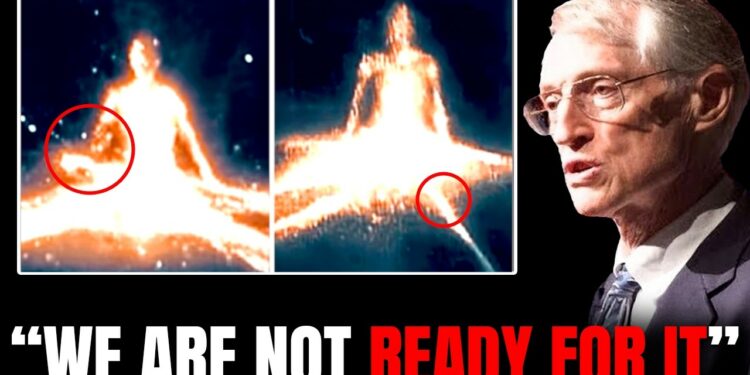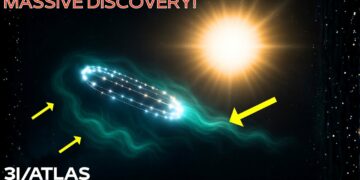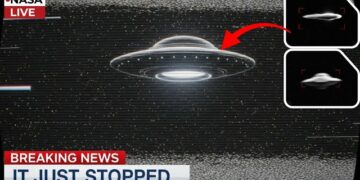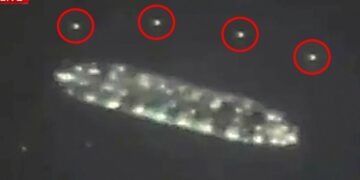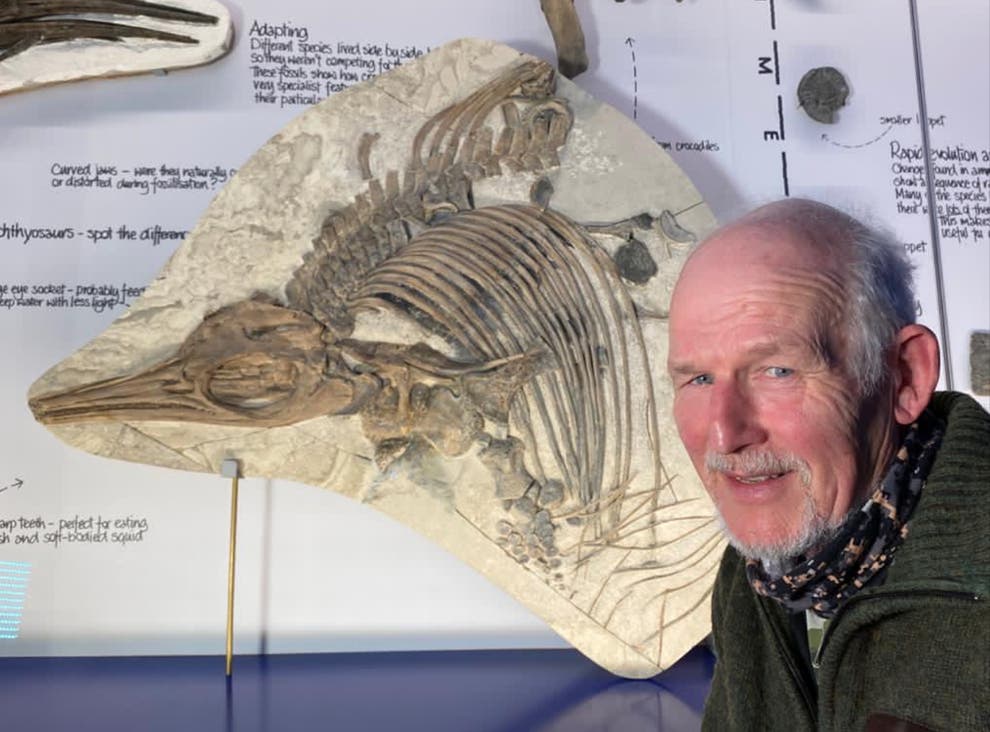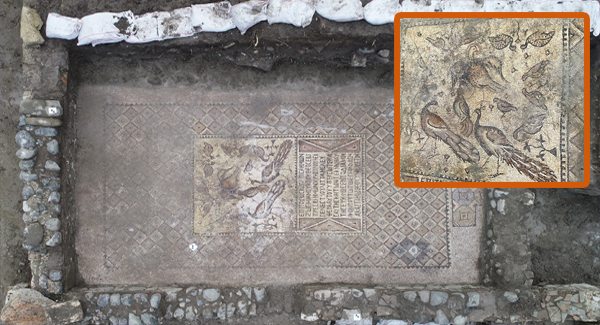The James Webb Space Telescope (JWST) has captured stunning images and revealed cosmic mysteries, but its latest discovery has left astronomers stunned and a Nobel laureate issuing a chilling warning. This finding, described as a potentially groundbreaking revelation, could challenge our understanding of the universe and hint at unsettling truths lurking in the darkness.
The Vast Universe
The universe encompasses all matter, energy, and physical laws, a vast expanse filled with stars, galaxies, and countless wonders. Spanning roughly 92 billion light-years in diameter, the observable universe is just a fraction of what may exist beyond our detection. Observing distant objects is like looking back in time, as their light takes billions of years to reach us, offering glimpses of the cosmos’ past. The Big Bang Theory suggests the universe began 13.8 billion years ago in a hot, dense state, with space expanding and matter forming atoms, stars, and galaxies over time. However, JWST’s observations of surprisingly mature galaxies from the universe’s early stages challenge the standard Lambda Cold Dark Matter (ΛCDM) model, which incorporates dark energy and dark matter. These findings may demand revisions to our understanding of cosmic evolution, dark energy, dark matter, and the universe’s expansion rate.
Telescopes: Capturing Cosmic Light
Telescopes collect light across various wavelengths—optical, radio, infrared, ultraviolet, X-ray, and gamma-ray—revealing different facets of the universe. Early telescopes, like Galileo’s, showed Jupiter’s moons and Venus’s phases, proving Earth isn’t the cosmic center. Modern ground-based telescopes, such as the Keck Observatory and the Very Large Telescope, use large mirrors to gather light but face atmospheric distortion. Space telescopes like Hubble, launched in 1990, avoid these issues, capturing iconic images like the Deep Field, which revealed thousands of galaxies in seemingly empty sky. Hubble refined the Hubble constant (cosmic expansion rate) and mapped star-forming regions.
JWST, designed for infrared observation, probes the universe’s earliest epochs. Its 6.5-meter segmented mirror and advanced cooling system at Lagrange Point 2 (L2) detect faint signals from objects formed shortly after the Big Bang. JWST’s Deep Field images, taken with its Near-Infrared Camera (NIRCam), reveal thousands of galaxies, some warped by gravitational lensing, dating back to the universe’s first billion years. Its spectroscopic instruments (NIRSpec and MIRI) analyze chemical compositions, star formation rates, and velocities, providing clues about early galaxies like JADES-GS-z14-0, observed just 290 million years post-Big Bang. These galaxies appear unexpectedly bright and structured, challenging standard star formation models.
Challenging the Big Bang Timeline
The Big Bang model outlines a universe evolving from a hot, dense state to today’s cooler cosmos. The cosmic microwave background (CMB), emitted 380,000 years after the Big Bang, marks when neutral atoms formed, allowing light to travel freely. JWST’s discovery of well-developed galaxies less than 400 million years post-Big Bang defies expectations that galaxies would take 500 million to 1 billion years to form. These galaxies, with high stellar masses and efficient star formation, suggest either an older universe, faster galaxy formation, or misidentified objects like quasars. Possible explanations include denser gas pockets, faster cooling, or compact galaxy structures. If confirmed, these findings could force a rethink of star formation processes or even the Big Bang timeline itself.
Dark Matter and Dark Energy
The ΛCDM model attributes 68% of the universe to dark energy, 27% to dark matter, and 5% to ordinary matter. Dark matter provides gravitational scaffolding for galaxy formation, while dark energy drives accelerated expansion, discovered via Type Ia supernovae (earning a Nobel Prize for Adam Riess and others). JWST’s early galaxy observations question whether dark matter clumped faster than expected or if alternative forms, like warm or self-interacting dark matter, exist. Dark energy’s role may also vary across time, prompting exploration of modified gravity theories like MOND, though these struggle to fully replace dark matter and energy. JWST’s data fuels debates about these mysterious components.
Star Formation Anomalies
Star formation typically converts only a fraction of a galaxy’s gas into stars due to feedback from supernovae, stellar winds, and radiation pressure. JWST’s discovery of early galaxies converting nearly all their gas into stars suggests unusually efficient processes, possibly due to denser, cooler gas or compact structures. Some objects might be active galactic nuclei (AGNs) or quasars, mistaken for star-rich galaxies. Spectroscopic follow-ups are critical to distinguish these, potentially rewriting galaxy evolution theories or revealing early black hole formation.
The Hubble Tension
The Hubble constant, measuring cosmic expansion, shows a discrepancy: supernovae in nearby galaxies suggest 73–75 km/s/Mpc, while CMB data from Planck indicate 67–69 km/s/Mpc. This “Hubble tension” persists despite precise measurements, hinting at new physics or calibration errors. JWST’s early galaxy findings may relate, as faster structure formation could affect expansion calculations. Future missions like the Nancy Grace Roman Space Telescope and ESA’s Euclid will gather more data to resolve or confirm this tension, potentially reshaping the ΛCDM model.
Cosmic Microwave Background
The CMB, a snapshot of the universe at 380,000 years old, shows temperature fluctuations from quantum seeds magnified during inflation. Planck and WMAP maps derive key parameters like matter density and expansion rate. Anomalies, like the CMB cold spot, suggest exotic phenomena, such as multiverse bubble collisions. JWST’s early galaxy observations test whether CMB-based predictions match actual structures, potentially revealing discrepancies in the early universe’s evolution.
Rethinking Cosmic Origins
Inflation, proposed to solve the horizon and flatness problems, suggests rapid expansion post-Big Bang, creating galaxy-forming seeds. JWST’s data and the Hubble tension question inflation’s details, prompting alternatives like cyclical cosmologies, varying light speeds, or quantum gravity models without a singular Big Bang. Nobel laureates like Adam Riess and David Gross advocate re-examining cosmological principles, seeing these challenges as opportunities for breakthroughs uniting quantum and cosmic physics.
Quantum Insights
The early universe was a high-energy quantum environment. Experiments at the Large Hadron Collider (LHC) and dark matter detectors explore particle physics, potentially linking to cosmic expansion. David Gross’s work on quark behavior at high energies informs early universe models. String theory, proposing particles as vibrating strings in higher dimensions, might unify gravity and quantum mechanics, with clues in CMB anomalies or galaxy distributions. JWST’s findings could support quantum gravity models, suggesting older or cyclical universes.
Beyond the Observable Horizon
The observable universe spans 92 billion light-years, limited by light’s travel time. Beyond this, space may be infinite, with regions moving faster than light, forever out of reach. JWST’s ability to peer near the cosmic dawn reveals early structures, but fainter objects may require future technology. Speculations about non-flat geometry, large-scale voids, or multiverse bubbles persist, though no definitive evidence exists. JWST’s data may hint at anomalies challenging the assumption of cosmic isotropy, pushing cosmology toward new frontiers.

